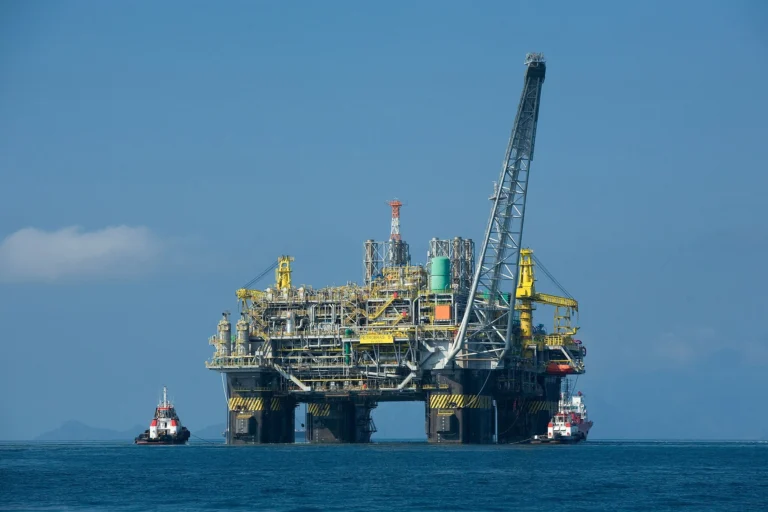Oil company BP Plc has published its annual Energy Outlook report, indicating that global oil demand will continue to rise throughout the rest of the decade.
Oil company BP Plc has published its annual Energy Outlook report, indicating that global oil demand will continue to rise throughout the rest of the decade. According to the company, this growth is being driven by factors such as the current state of the energy market, geopolitical tensions, and the continued use of petrochemical products, suggesting that crude oil consumption may not peak as soon as previously expected.
Previously, BP had estimated that oil demand would peak in 2025. However, in its latest analysis, the company has revised this forecast, now suggesting that the peak could be delayed until 2030. The report projects that global oil consumption could reach 103.4 million barrels per day within five years, compared to the 102.2 million expected for this year.

Energy Outlook: fuel demand and other trends
This shift in perspective is largely attributed to energy policies implemented during the administration of President Donald Trump, which moved away from clean energy transition goals. As a result, major oil companies have maintained high sales levels. In BP’s case, the company has also faced pressure from activist hedge fund Elliott Investment Management, which has been pushing for a stronger focus on its oil and gas businesses, according to Transport Topics.
The Energy Outlook also highlights a rebound in fossil fuel demand due to delays in the adoption of electric vehicles and other alternative energy technologies. If this trend continues, BP estimates there could be an additional demand of up to six million barrels per day by 2035. This projection was shared by BP’s Chief Economist, Spencer Dale, and his team.
Since 2019, oil demand has grown at an average rate of 0.6 million barrels per day (Mb/d) per year, according to BP. This increase has been entirely driven by higher consumption in emerging economies. In particular, China’s oil demand, which accounted for roughly half of global demand growth over the past decade, appears to be on track to stabilize during the second half of the 2020s.
As a result, BP expects a long tail of oil demand to persist beyond 2035, following the world’s current trajectory, with consumption reaching around 83 million barrels per day by 2050. Last year’s BP report projected a consumption level of around 75 million barrels per day for 2050.

The role of AI in global electricity demand
Additionally, the report notes that an emerging variable in the energy landscape is the rising demand from data centers, driven by the development of artificial intelligence. According to BP estimates, these centers could account for roughly 10% of the increase in global electricity demand through 2035, and up to 40% of the growth in the United States.
However, the company cautions that there is a high degree of uncertainty in these projections, due to the rapid technological advancements in chip efficiency and cooling systems.
“One of the advantages of the Energy Outlook is that it contributes to ongoing debate and dialogue around the many issues affecting the energy system. I hope this year’s Outlook proves useful to everyone grappling with these issues,” said Spencer Dale.
The full report can be found on BP’s official website or by accessing the following link.

Women’s safety in the transport sector: urgent priorities
International Day for the Elimination of Violence against Women is observed today, November 25. International Day for the Elimination of Violence against Women is observed

Federal CDL policies linked to thousands of lost trucking jobs
Federal government measures regarding CDLs and English-language proficiency requirements have resulted in the loss of thousands of jobs in the trucking industry. Federal government measures

Thanksgiving 2025: Weather and Road Conditions Across the U.S.
Thanksgiving 2025: What Truckers Need to Know About Weather and Road Conditions Across the U.S.

Comprehensive Guide to the New Federal Rule for Accessing CDL Licenses
The federal government has redefined who can apply for, renew, or retain a Commercial Driver’s License (CDL), introducing new restrictions for migrants and issuing direct

What drivers want: more mileage, more pay
The results of the annual Commercial Carrier Journal survey, conducted in collaboration with Netradyne, “What Drivers Want,” have now been published. The results of the

U.S. Unveils 1st Female Crash-Test Dummy, Sparking Debate: Are Accidents Different for Men and Women?
The new THOR-05F marks a milestone: for the first time, a crash-test dummy accurately reflects the female anatomy. Officials argue that decades of safety testing based on male-bodied models left women more vulnerable to severe injuries. The announcement aligns with the administration’s broader push to reintroduce biological sex classifications in medical and safety policy.
All content and original artwork, unless otherwise noted, is protected by copyright. Saint George uses certain images under license from various licensing vendors for this purpose. Any unauthorized commercial reproduction or distribution of copyrighted materials is prohibited.
